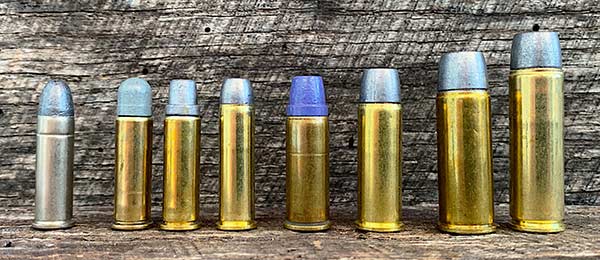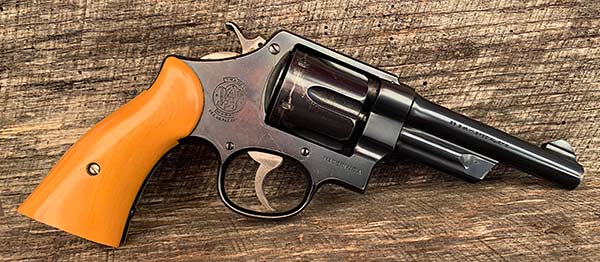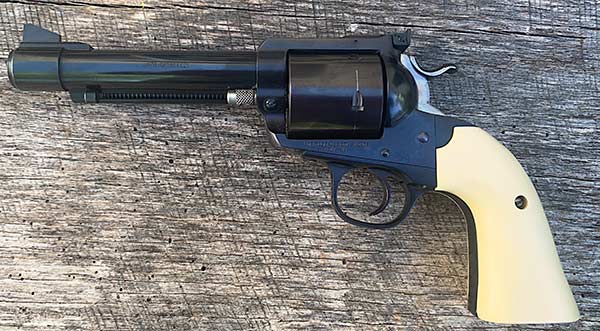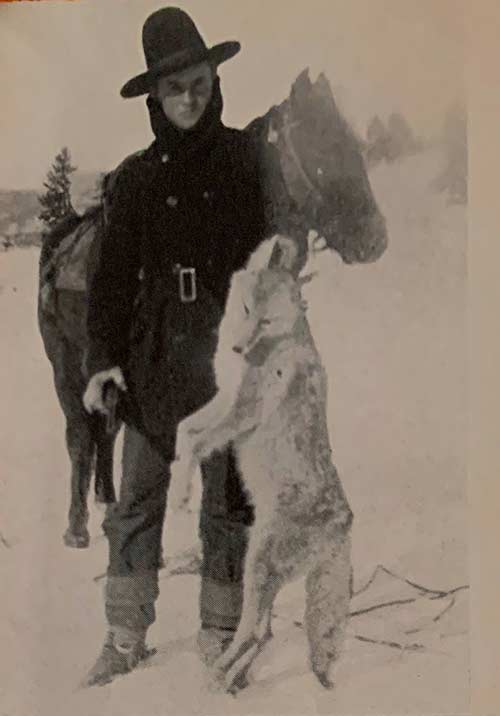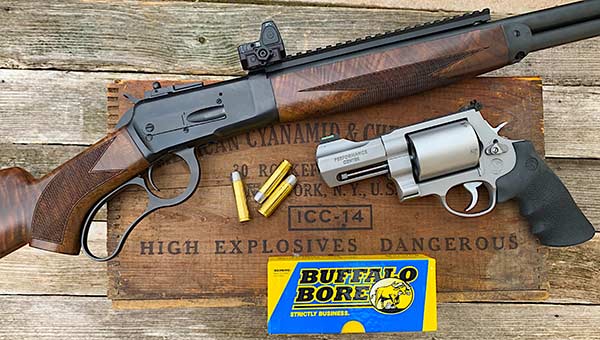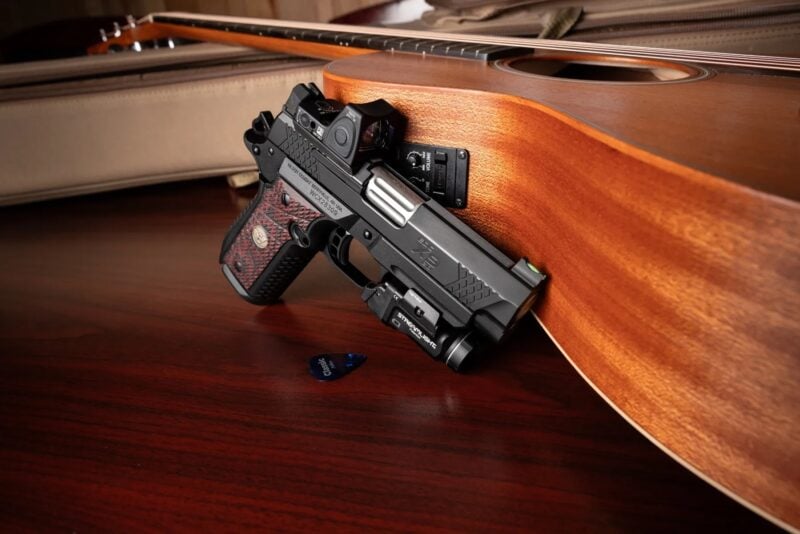The Seed To Success
May Surprise You
A Short History From Mild To Wild!
When talking of big-bore handguns what’s the first cartridge that pops into your head? Traditional single-action aficionados will pipe out either the .475 or .500 Linebaugh cartridges. Those with an affinity for double-action revolvers will chime in with the 500 S&W Magnum. There’s no denying these cartridges are in fact genuine big bores. But how did we end up here? What was the progression leading to these cartridges capable of heaving large hunks of lead and killing large, scary, dangerous animals? The answer may surprise you.
A Special Case
The humble .38 Special was designed and manufactured in 1898. By the 1920s it was the most popular cartridge carried by law enforcement officers. In the late ’20s, Western Cartridge Company designed a 200-grain round-nose lead Lubaloy bullet, calling it the .38 Super Police which provided better performance while still capable of being shot in original guns.
In 1930, S&W introduced their large “N” frame 38/44 fix sighted heavy duty revolver. An adjustable sighted version soon followed called the Outdoorsman. The following year, at the request of law enforcement, the .38 Special Hi-Speed featuring a 158-grain metal-tipped bullet capable of penetrating auto bodies, was developed for these guns. Colt announced their Colt Official Police the same year, which was also capable of firing the Hi-Speed loads.
Real Cowboy Loads
Around this same timeframe, a cowpuncher from Oregon/Idaho started his own experiment with the large “N” frame sixguns. Designing his own cast slug and using Dupont #80 powder early on, he eventually settled on Hercules 2400 powder for his final load. His bullet, known as Lyman/Ideal 358429 weighed 173 grains. His load was 13.5 grains of 2400 loaded in .38 Special brass.
The cowboy’s bullet was designed to provide maximum powder capacity with crimp groove placement. This meant the nose of the slug was near the end of the cylinder. The slug was also aerodynamic, maintaining accuracy for shots stretching several hundred yards.
The current 2400 manufactured by Alliant has a slightly faster burn rate, so it’s recommended to drop the charge to 13.0 grains of 2400. As always, work up to this point with your gun. My own guns shoot cast bullets from a vintage ’70s Lyman 358429 mold around 1,260 fps, depending on barrel length. It indeed packs a wallop and is extremely accurate.
Of course, the cowboy we’re talking about is none other than Elmer Keith. His early work with the .38 Special led to the first magnum a few years later — the .357.
The .44 Special
Mention .44 anything and sixgunners automatically think of Elmer Keith. After a fateful July Fourth when young Elmer blew up his Colt SAA .45 Colt with oversized cast bullets and pulverized black powder, he re-thought his caliber choice in 1927. The .44 Special provided thicker, stronger cylinder walls, so Elmer started developing loads for it. He designed the Lyman/Ideal 429421 for it. Depending on brass, whether balloon head (18.5 grains) or solid head (17.5 grains), Keith used heavy loads of Hercules 2400 to drive his bullet 1,200 fps. That’s all the velocity Elmer ever wanted.
He pestered ammo manufacturers for years to load his heavy .44 Special load. Fearful of older guns and lawsuits, Remington finally relented around 1956, bringing out the .44 Magnum — which was 1/10” longer than the Special case and wouldn’t chamber in .44 Special guns.
Keith got more than he wanted with early factory loads pushing in excess of 1,400 fps with a 240- grain swaged lead gas checked bullet. While he didn’t invent the .44 Magnum per say, his input was surely taken into consideration.
The First .500
1986 was a stupendous year! A young, talented, innovative gunsmith by the name of John Linebaugh came out with his .500 Linebaugh cartridge. Based on a cutdown .348 Winchester cartridge, the bullets are sized .510” for jacketed and up to .513” for cast. When .348 Winchester brass became scarce, Linebaugh came up with the idea of using readily available .45-70 cases for the .475 Linebaugh a few years later. Since then, companies like Starline Brass provide brass for both Linebaugh cartridges while Hornady and Buffalo Bore manufacture loaded cartridges.
Linebaugh considered himself a student of Elmer Keith, picking up where the master left off, with his cartridge and gun designs, along with famed hunter, John “Pondoro” Taylor, who’s also a fan of large, heavy bullets at moderate velocity for large, dangerous game. John recently passed away leaving behind a legend of large bore cartridges and custom guns bearing his name.
Last, But Not Least…
The 500 S&W Magnum first made its appearance at the 2003 SHOT Show. Designed by the folks at Corbon Ammunition, in a partnership with S&W, the .50-caliber, semi-rimmed cartridge has two primary purposes. The first, being a handgun cartridge capable of taking any North American big game species.
The second? Simply claiming bragging rights of being the most powerful production handgun cartridge ever produced. If you’re going to do something, you might as well do it big! What better reason is there?
Final Analysis
It’s amazing to look at how the progression of cartridges grew in both diameter and power level over the years. Who would have thought by super-charging the meek .38 Special it would have led to such monstrosities as the .500 Linebaugh and S&W Magnum?
Do I think we’ve reached our peak cartridge-wise? I doubt it. It’s human nature to want to keep pushing the envelope to design the next biggest, baddest, most powerful cartridge in existence.

